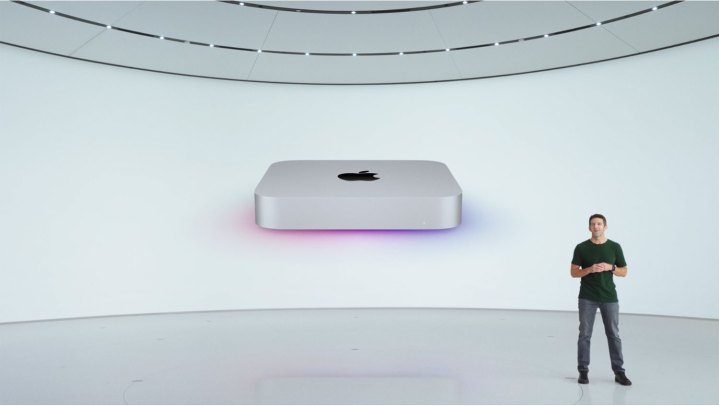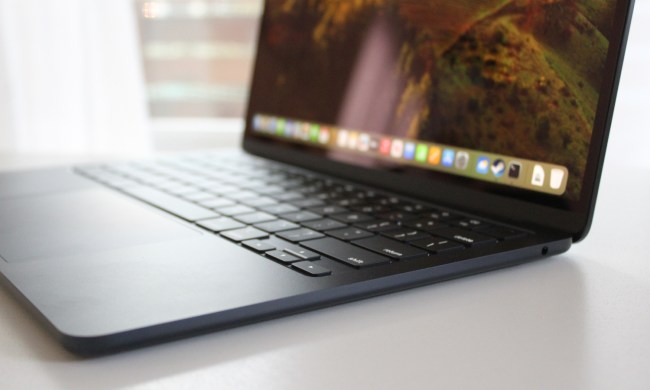I’m going to come right out and say it: The Apple Silicon Macs with the new M1 chip that Tim Cook and company showed off at the company’s November 2020 event are the biggest and best Apple products of 2020.
That may sound like an outlandish thing to say. According to Apple’s latest financial results, over the 12 months prior to September 2020, the company sold almost five iPhones for every Mac. Surely that means the Mac is an utter small fry compared to the iPhone behemoth? With its svelte new design and superb cameras, won’t the iPhone 12 family cement that dominance?
Those numbers only tell half the story. For all their nifty features and curb appeal, the latest iPhones represent a far smaller step up over their predecessors than the latest Apple Silicon MacBooks do over their own forebears. For long-suffering Mac fans, that means there is finally light at the end of the tunnel. While the latest iPhones are an evolution, the new Macs are a revolution.
Cutting the price of performance
This is not the first time in recent memory that Mac users have had reason for hope. In November 2019, Apple unveiled the 16-inch MacBook Pro, which was a massive step up from the 15-inch model that came before it. Almost everything was better, from the performance and cooling system to the Magic Keyboard and larger display. It was a new dawn for Macs.
Or at least, that is how it seemed at the time. The problem was that Apple never brought most of these improvements to the 13-inch MacBook Pro — or the MacBook Air, for that matter. With prices starting at a cool $2,399 for the 16-inch model, the vast majority of these excellent improvements were simply out of reach for most people. If you wanted a system that did not overheat and throttle while working to its limits, or you wanted a modern-looking Apple laptop with slimline bezels, you had to pay the eye-watering sums Apple was demanding or simply go without.
While the Apple Silicon Macs that Apple has just announced do not solve that problem completely, they do manage to address the most glaring issue: Performance. By installing chips that not only run faster but cooler than their predecessors, Apple is essentially bringing the same benefits of the 16-inch MacBook Pro’s thermal architecture to its smaller sibling, all for about half the price of the high-end laptop. That’s a big win for most Mac users.
And we are not simply talking a few small gains here, a little extra battery life there. No, Apple really knocked it out of the park this time. The 13-inch MacBook Pro now has a CPU that runs almost three times faster than the best that Intel could manage, and a graphics chip that is a mind-boggling five times faster. Think Macs can’t do games? Think again.
What is even more astounding is that the 13-inch MacBook Pro’s battery life has doubled, from 10 hours of video playback to 20 hours. I cannot think of a single rival laptop that has simultaneously increased both performance and battery life in such a big way.
Apple shares the wealth
Given the sheer number of people it will benefit, that alone may be enough to tip the scales toward the Apple Silicon Macs when we look for the best Apple announcement of 2020. But Apple did not stop there.
In announcing that Apple Silicon would also be coming to the MacBook Air and the Mac Mini, the company ensured no Mac user has to miss out on the benefits the company’s own M1 chips will bring. The MacBook Air is Apple’s most affordable MacBook, and despite the numerous improvements brought by the M1 — Apple boasted of 3.5 times faster CPU performance and five times faster graphics performance over the previous MacBook Air — there is no increase on the $999 starting price.
Even that remarkable feat is topped by the new Mac Mini. Apple’s smallest desktop Mac now has a chip that offers three times faster CPU performance and a huge six times faster GPU performance — that is the biggest performance increase of any Mac announced at the show, by the way — all while actually cutting the price down from $799 to $699. I’m not one to get carried away by slick presentations, but this had even me impressed.
Every portable Mac now has an Apple M1 chip inside, as does its most affordable desktop offering. Given these are far more popular than Apple’s desktop Macs like the 5K iMac or Mac Mini, it is a sensible move, and ensures a large number of Mac users can see the uptick in performance from the new processors.
And that, ultimately, is what makes Apple’s November event its most important show of 2020. Not only is Apple Silicon a vast improvement over Intel’s frequently delayed processors, but Apple has managed to bring it to a wide array of potential Mac buyers. In making this change, Apple has given Mac fans something to smile about — and buy.





